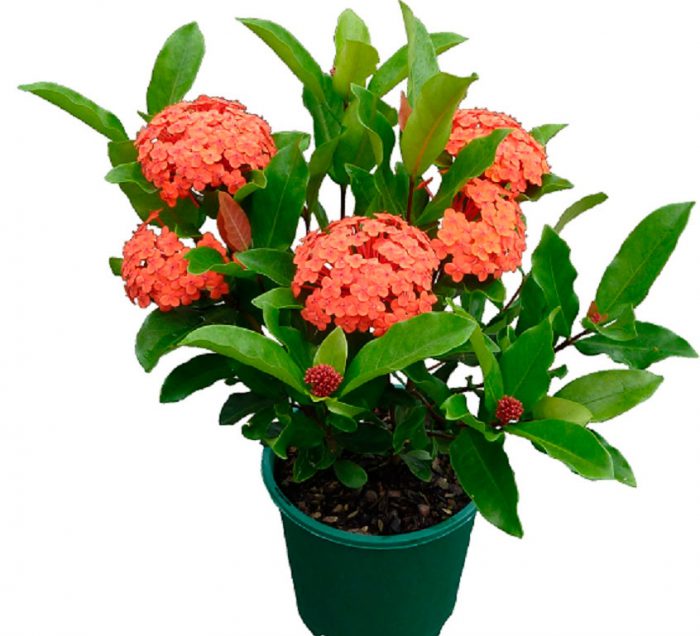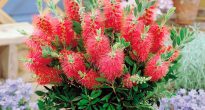An evergreen shrub like Ixora (Ixora) occurs naturally in the tropical forests of Asia. It is also called “forest fire". There are about 400 plant species in this genus. It is directly related to the madder family.
In India, this plant is considered medicinal and is used in traditional medicine. So, the roots are used for fever and diarrhea, and the leaves have antiseptic properties.
Under indoor conditions, this plant can reach a height of 100 centimeters. Ixora leaves are leathery and shiny. Flowers are located at the ends of the stems. They are collected in beautiful spherical or umbrella-shaped inflorescences. Flowers can be pink, white, orange, red, yellow, and peach. There are many inflorescences at the end of each shoot. If conditions are favorable, then flowering lasts from spring to autumn.
At home, as a rule, 2 species are grown, namely: bright red Ixora and Javanese Ixora.
Content
Ixora care at home
Illumination
Loves light very much. It should be bright and diffused. In the autumn-winter period, it is recommended to place the ixor on the windowsill of a window located in the southern part of the room, and in the warm season - in the east or west.
Temperature regime
Loves warmth. In summer it is 18–20 degrees, and in winter - 15–18 degrees.
Humidity
High humidity is required. In the warm season, Ixora should be systematically sprayed.
How to water
You need to water it with slightly warm and always soft water. In winter, watering should be moderate, and in summer, abundant. For irrigation in the warm season, water is used at room temperature, and this procedure is performed after the top layer of the soil dries up. The soil should always be slightly moistened.
How to transplant
The transplant is carried out as needed in the spring. The flowerpot should be small, as the root of this plant is quite small.
Earth mixture
Prefers acidic soil. When planted in an alkaline earth, its foliage acquires a yellow tint, and the development of Ixora is disrupted. In order to make a suitable soil mixture, it is necessary to mix leaf and turf soil with sand and peat.
Fertilizer
You need to fertilize the plant in the spring-summer period 2 times a month. For this, a complex fertilizer for flowering plants is used. In autumn and winter, you cannot feed him.
Pruning
Cut off ½ part of the shoots after flowering. In spring, pruning is not done, because the formation of inflorescences occurs at the tips of regrown young shoots.
Reproduction methods
Such a plant can be propagated by cuttings or seeds.
Sowing seeds is done in small bowls. Seeds must be sprinkled with a thin layer of soil, carefully watered with a sprayer and covered with foil. Place the bowls in a warm place. The first shoots will appear in 2–3 weeks.
Cuttings are pruned in the spring, until the buds have formed. They are planted in light soil mixed with sand and covered with foil. The cuttings will fully root after about a couple of months, but only if they stand in a warm place (25-30 degrees).
Diseases and pests
Ixor can be settled thrips, spider mites, scabbardsas well as nematodes. Watering too often with hard, cold water can lead to chlorosis.
Possible problems
- Pale leaves, slow growth, no flowering - lack of light or lack of nutrients.
- The leaves turn yellow and fall off - low air humidity or the plant is watered with cold water.
- On the leaves, yellowness similar to stains ― It is necessary to acidify the earth.
- Falling buds - excessively dry air or the pot was moved from place to place.














